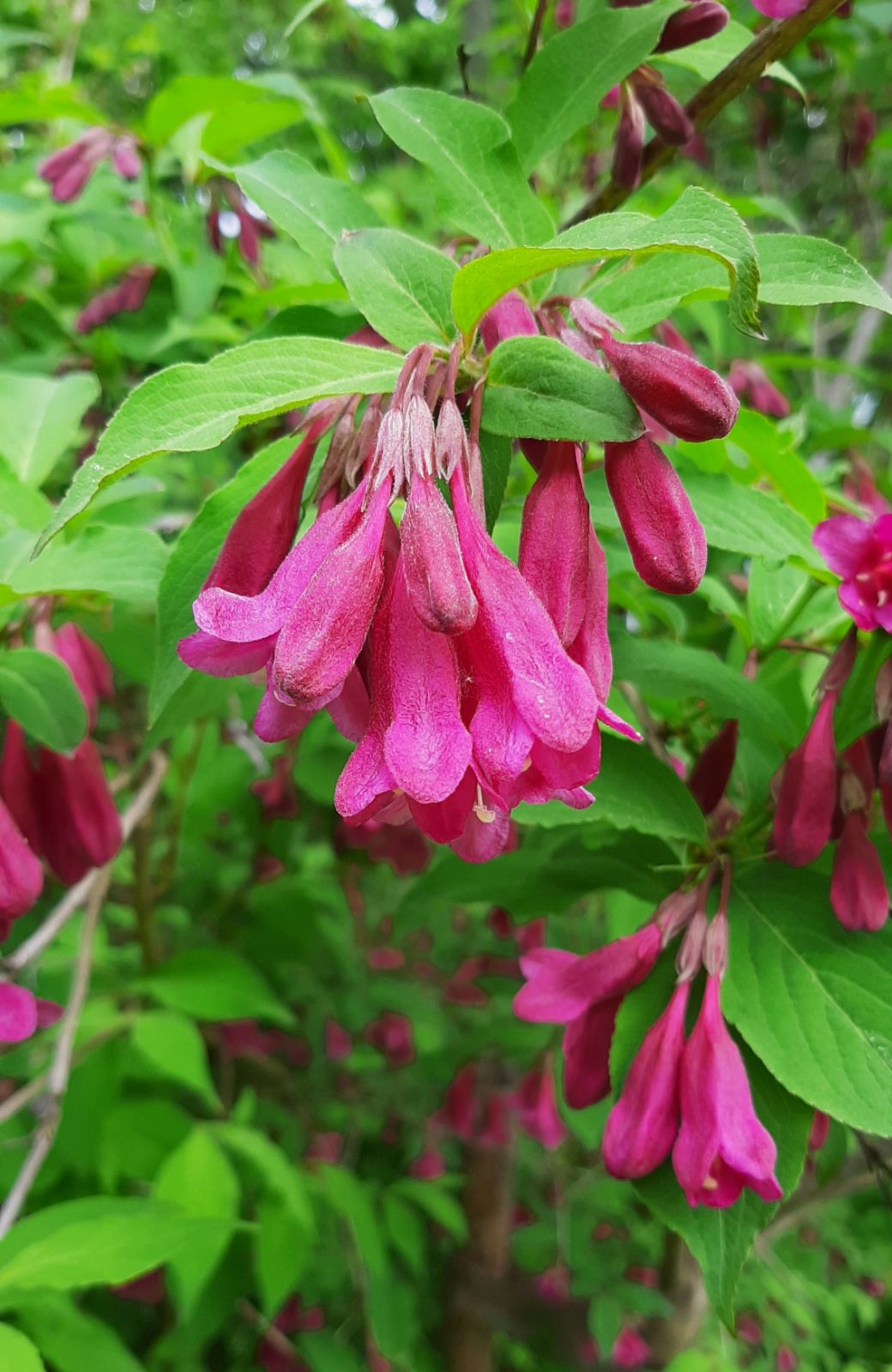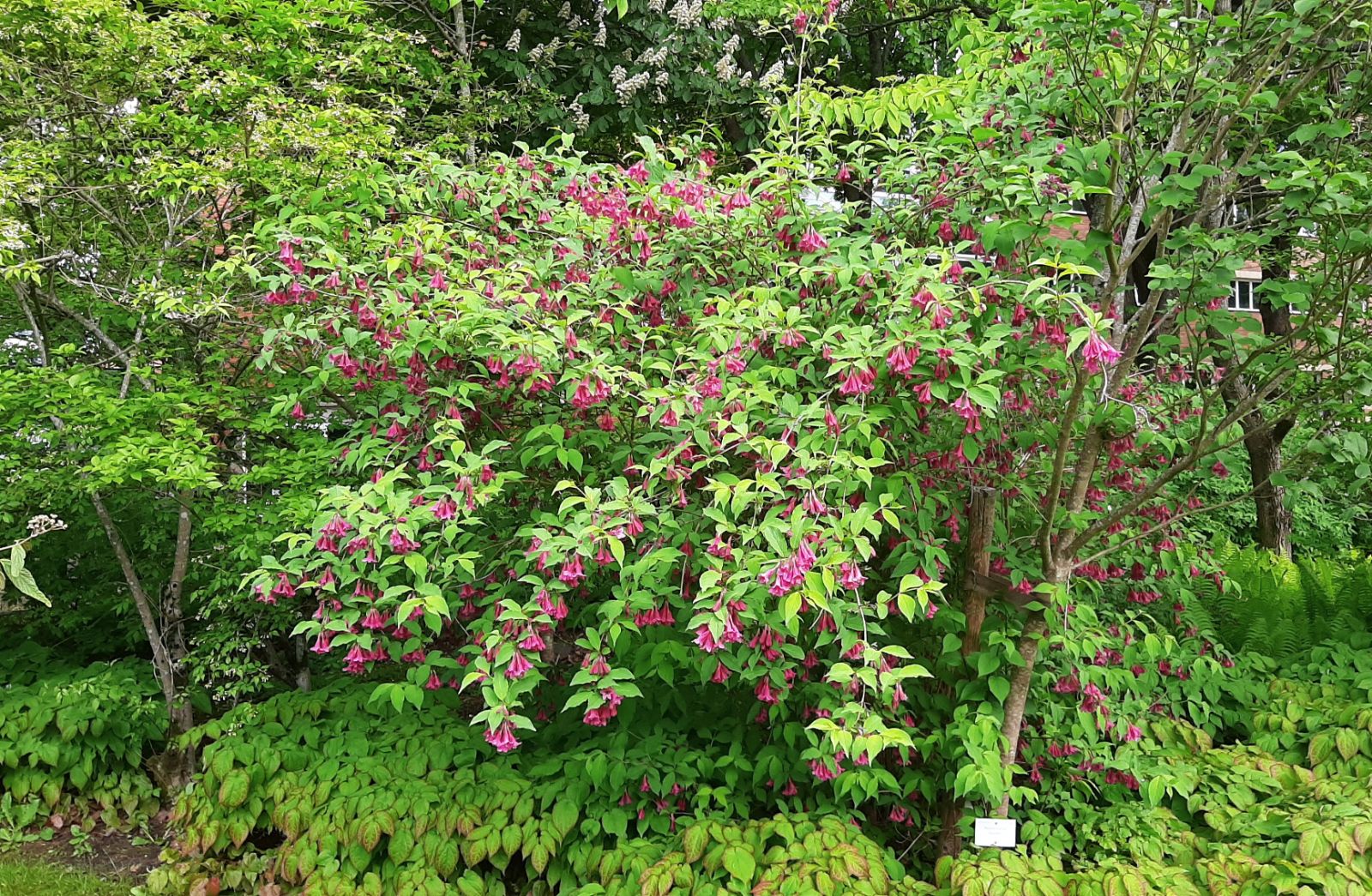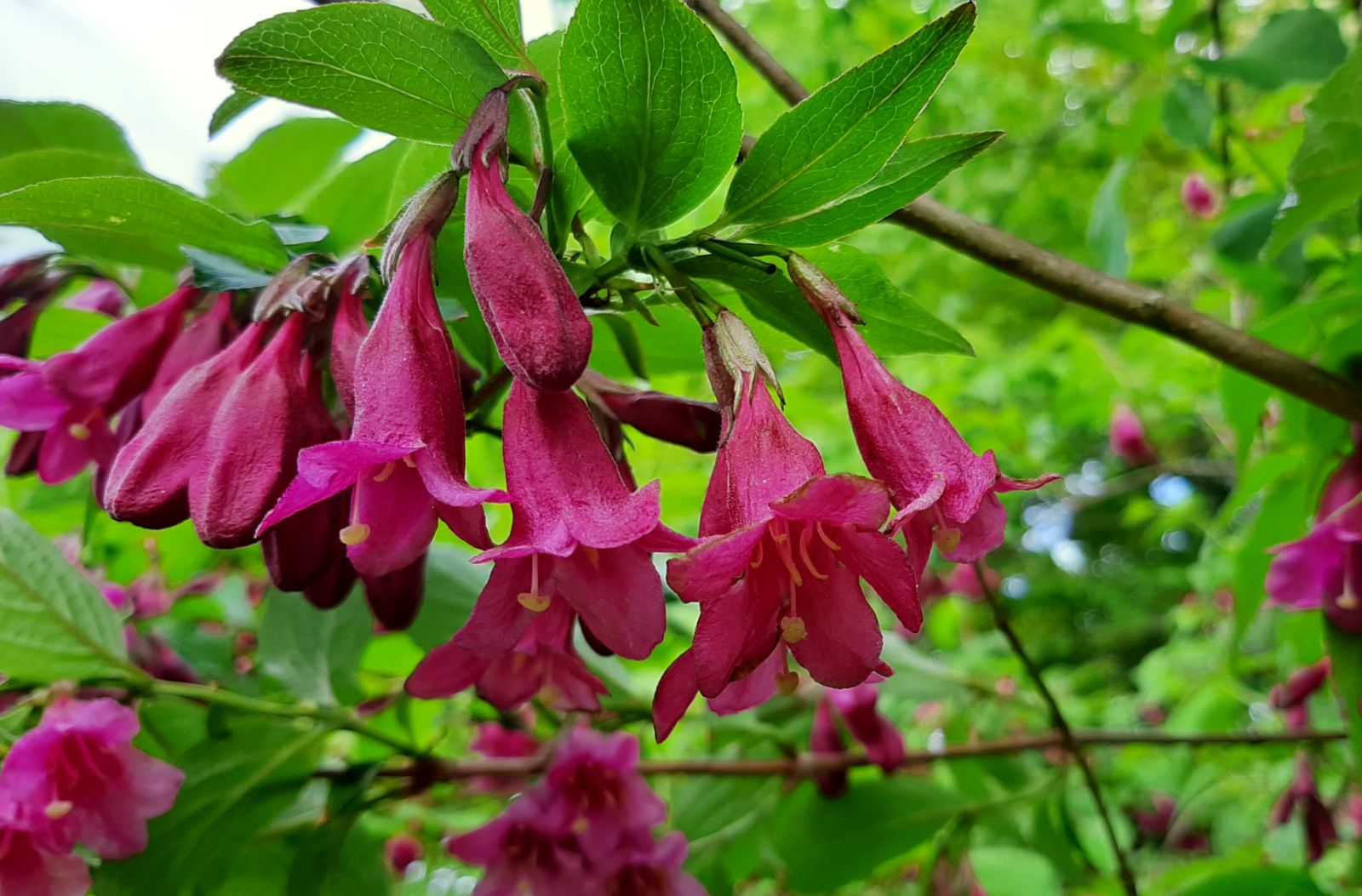Weigela florida
Sponsor
Kindly sponsored by
The Normanby Charitable Trust
Credits
Tom Christian & Alan Elliott (2019)
Recommended citation
Christian, T. & Elliott, A. (2019), 'Weigela florida' from the website Trees and Shrubs Online (treesandshrubsonline.
Genus
Synonyms
- Weigela praecox (Lemoine) L. H. Bailey
- Calysphyrum floridum Bunge
- Diervilla florida (Bunge) Sieb. & Zucc.
- Weigela rosea Lindl.
Infraspecifics
Other taxa in genus
- Weigela Aurea Group
- Weigela Bicolor Group
- Weigela coraeensis
- Weigela decora
- Weigela Dwarf Group
- Weigela floribunda
- Weigela hortensis
- Weigela japonica
- Weigela maximowiczii
- Weigela middendorffiana
- Weigela Pink-Flowered Group
- Weigela Purpurea Group
- Weigela Red-Flowered Group
- Weigela subsessilis
- Weigela Variegata Group
- Weigela White-Flowered Group
Shrub to 3 m, branches with 2 hairy ridges when young. Leaves elliptic or oblong-lanceolate or obovate 4–6 × 1.5–3 cm, apex acuminate, base cuneate or rounded margin shallowly serrate, upper surface, sparsely hairy with densely hairy midrib and veins, lower surface densely hairy on midrib and veins, lateral veins 4–6, petiole 0.2–0.3 cm, glabrous. Flowers solitary. Pedicel 1–1.5 cm long, hairy, bracts linear, 2–5 mm long, hairy, persistent. Calyx tube 5-lobed, radially symmetric, lanceolate, free half of length, 0.4–1 × c. 0.1 cm, sparsely hairy. Corolla funnel-shaped, 3–3.5 × c. 1 cm, gradually widening from the base, dark rose-red outside, lighter red inside, sparsely hairy outside. Corolla tube 2.2–2.9 cm, hairy inside, throat yellow, upper part of tube distinctly expanded, corolla 5-lobed, radially symmetric, irregulate lanceolate, 0.6–0.8 cm long (c. 20–25% of length of corolla tube). Stamen longer than corolla, filaments 0.8–1.3 cm long, glabrous; anthers, free, linear ca 0.5 cm, yellow. Style longer than corolla, 3–3.5 cm long, glabrous, stigma disc-like, 2–3 mm diameter. Fruit cylindrical, curved 2–2.5 cm long, dehiscing from apex, glabrous. Seeds oblong, 1.5 mm long, with angled ridges. Flowers: May to June. Fruits: July to September.
Based on Iwatsuki, K. (ed) (1993).
Distribution China Heilongjiang, Henan, N Jiangsu, Jilin, Liaoning, Nei Mongol, Shaanxi, N Shandong, Shanxi Japan Kyushu (Fukuoka Prefecture, Mount Koshozan) North Korea South Korea Russia Primorsky Krai
Habitat Mixed forest, scrub, 100–1500 m.
USDA Hardiness Zone 5-8
RHS Hardiness Rating H5
Predominantly distributed in northern and northeastern China and the Korean Peninsula, Bunge based his description of W. florida on plants he observed in gardens in Beijing. Robert Fortune first saw it, also in gardens, on the island of Chusan, and purchased a plant from a Shanghai nursery which he sent to the Horticultural Society in 1844 (Bean 1981b). Bean quotes Fortune’s later recollections of this introduction and it seems appropriate to maintain this in full:
‘Revisiting the nursery some years later he was asked by the nurseryman and his sons how this and the other plants he bought had thrived. “I told them that most of the plants had arrived safely in England, that they had been greatly admired, and that the beautiful Weigela had even attracted the notice of her Majesty the Queen. All these statements, more particularly the last, seemed to give them great pleasure; and they doubtless fancied the Weigela of more value ever afterwards.” (Fortune, Gard. Chron., 1850, p. 757)’ (Bean 1981b).
W. florida was one of the commonest representatives of the genus in cultivation following its introduction, and it has been extensively used in the creation of new hybrids. Many cultivars have traditionally been attributed to this species but, for reasons discussed in the generic article, it is more prudent nowadays to follow the modern use of Cultivar Groups. In the Bean supplement (Clarke 1988) the authors appear to assign the collection ‘B. E. & C. 206’ to W. florida, however they also quote the very same collection in reference to W. subsessilis. Whether this is a misidentification, later corrected, from the field, or else an editorial error, remains unclear.
W. praecox is maintained as a distinct species in the Korean floras, however both the Floras of China and Japan syonymise this with W. florida (Yang et al. 2011). Historically, the separation could be justified from a horticultural point of view in the West as many early flowering hybrids were attributed to W. praecox, however the establishment of modern Cultivar Groups negates this argument and we have reduced it to syonymy.
'Jitsuko's Gold'
Treated here as Weigela Aurea Group ‘Jitsuko’s Gold’
var. venusta (Rehd.) Nakai
Synonyms
Diervilla florida var. venusta Rehd.
Weigela venusta (Rehd.) Stapf
Differs from Weigela florida in that it has smaller obovate leaves that are glabrous, the corolla narrowing gradually toward the base (Bean 1981).
RHS Hardiness Rating: H5
Taxonomic note This variety does not appear to be recognised by Korean floras.
A graceful shrub to 2(–3) m tall. Introduced to the Arnold Arboretum by J.G. Jack in 1905 from the Korean peninsula. Plants cultivated in Britain probably all derive from the seeds collected by Wilson in Korea in 1918 (Bean 1981).



